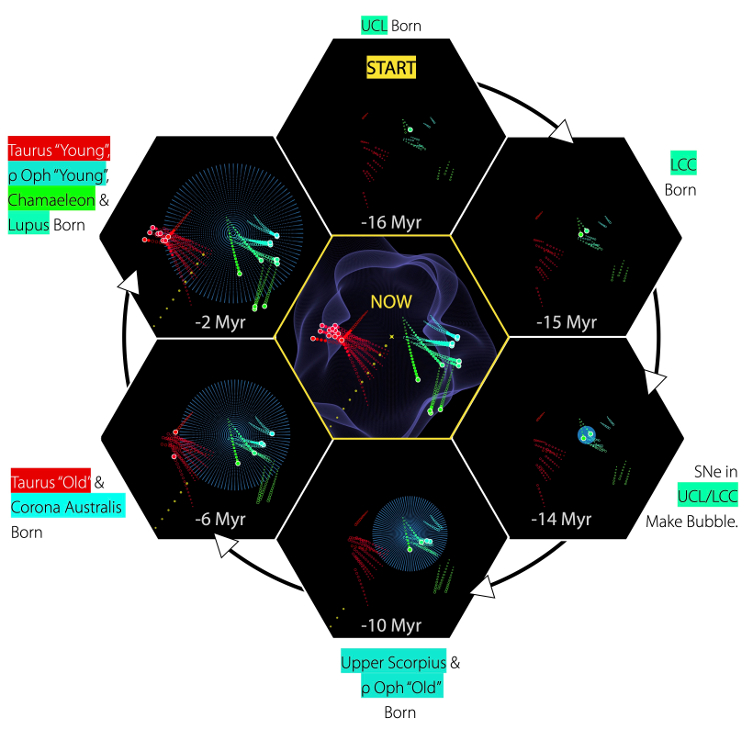| EPoS Contribution |
|
Star formation near the Sun is driven by expansion of the Local Bubble
Catherine Zucker STScI, Baltimore, US | |
| For decades we have known that the Sun lies within the Local Bubble, a cavity of low-density, high-temperature plasma surrounded by a shell of cold, neutral gas and dust. However, the precise shape and extent of this shell, the impetus and timescale for its formation, and its relationship to nearby star formation have remained uncertain, largely due to low-resolution models of the local interstellar medium. In this talk, we present an analysis of the three-dimensional positions, shapes and motions of dense gas and young stars within 200 pc of the Sun, using new spatial and dynamical constraints from the Gaia mission. We find that nearly all of the star-forming complexes in the solar vicinity lie on the surface of the Local Bubble and that their young stars show outward expansion mainly perpendicular to the bubble's surface. Tracebacks of these young stars' motions support a picture in which the origin of the Local Bubble was a burst of stellar birth and then death (supernovae) taking place near the bubble's center beginning approximately 14 Myr ago. The expansion of the Local Bubble created by the supernovae swept up the ambient interstellar medium into an extended shell that has now fragmented and collapsed into the most prominent nearby molecular clouds. Our result constitutes robust observational support for the theory of supernova-driven star formation and paints a self-consistent picture of the local Milky Way’s star formation history over the past 20 Myr. | |
 | |
| Caption: The evolution of the Local Bubble and sequential star formation at the surface of its expanding shell. Selected time snapshots (seen from a top-down projection) are shown here. For a full time sequence, viewable from any angle (not just top-down), see the online 3D interactive version available here (not working on all browser versions). Stellar cluster tracebacks are shown with the colored paths. Prior to the cluster birth, the tracebacks are shown as unfilled circles meant to guide the eye, since our modeling is insensitive to the dynamics of the gas before its conversion into stars. After the cluster birth, the tracebacks are shown with filled circles and terminate in a large dot, which marks the cluster’s current position. For time snapshots < 14 Myr ago, we overlay a model for the evolution of the Local Bubble (purple sphere). The solar orbit is shown in yellow and indicates that the Sun entered the Local Bubble approximately 5 Myr ago. In the present day, we show the current distribution of dense star-forming molecular gas and young stellar clusters, enveloping the Local Bubble. | |
| Collaborators: A. Goodman, Harvard, US J. Alves, U Vienna, AT S. Bialy, U Maryland , US M. Foley, Harvard, US J. Speagle, U Toronto, CA J. Grossschedl, U Vienna, AT D. Finkbeiner, Harvard, US A. Burkert, LMU, DE D. Khimey, Harvard, US C. Swiggum, U Vienna, AT |
Key publication
Suggested Session: Molecular Clouds |

